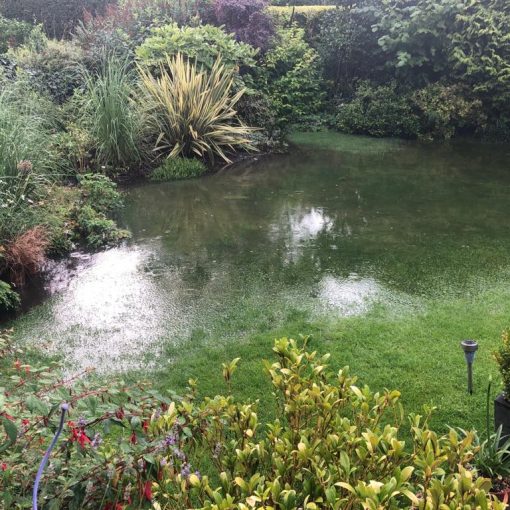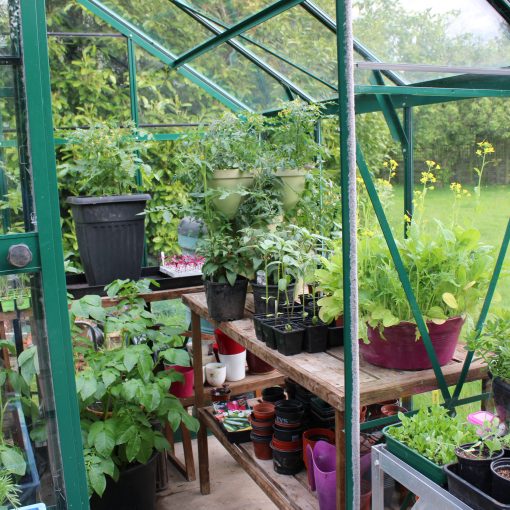I am presuming that you have a complete set of notes for Unit 1 or Unit 2 of the new syllabus. If not…Houston we have a problem! Overwhelmed with the volume of information to learn, it is easy to procrastinate.
Whether you are starting a new RHS qualification or are 6 weeks before the exam, the best time to start revision is to start NOW.
Step 1. Make a study plan and start revising TODAY.
Starting is the hardest part – We are all guilty of procrastinating. Haul out those books which give you a guilty stab in the heart every time you think about them. You’ll find that they don’t devour you on site – now you have taken that first big step – open the pages and start flicking through the content.
Break each Unit up into sections and create a heading for each section.
If we look at Unit 1, there are 4 topics:
- Science 1
- Plant Health
- Plant Nutrition
- Plant Specification.
Each topic is made up of elements. In Unit 1 there are 24 elements in total.
You then work out a study plan which enables you fit the 24 elements into the time you have. So for example if you had 7 weeks to study for the exam you would look at a new element every 1 and a half days and that would leave you some time before the exam to review everything.
Studies have shown that people allowed to study a new language for half an hour a day for a week did much better in the test at the end, compared to those who had only 3 hours to study the night before the exam. It is good to ‘sleep’ on information and you will be able to retain more information if you revise every day.
Step 2. Decide when and where to revise.
Everyone is different – some students will have more prior knowledge or will have already taken some RHS exams and some will swear that they never wrote half their notes it is so long since they looked at them!! So the first question is: Is it better to study in the morning or evening?
There are two types of people – morning people and night owls. It also depends what else you have on during the day. If you are working as a gardener you will be tired due to the physical labour. If you have kids you may not be free until 9pm (and you will also be very tired). The key thing is, you need to be focused and undisturbed. No interruptions, no social media notifications, nobody chatting to you. If you have a full-on day every day I would advise setting the alarm clock an hour early and doing it then before everyone gets up and while you are fresh. If you prefer the night time to revise then do it then if you are not too tired.
Research shows that there is not that much difference between morning and night time revising. While the afternoon and night are better for applying what you’ve learned and analysing information, the morning is best for remembering facts and numbers according to one research study, but there isn’t much in it.
Where to study – Here is a great article about how to create the perfect study space:
https://tutorful.co.uk/guides/the-ultimate-revision-guide/how-to-create-the-perfect-study-space
I definitely work better when I have a clutter free desk. Here is my desk – still a little clutter but a nice view.

Step 3. Print out the RHS qualification specification (syllabus)
Below is the link to the NEW syllabus (Post September 2022)
RHS Level 2 Certificate in the Principles of Plant Growth and Development
Have the syllabus sat on your desk alongside your notes so that you can use it as a revision guide. It’s good to be digital and save paper but printing it saves you having to use the PC or laptop and you can put a gratifying ‘tick’ when you have completed a section. The syllabus is your framework for revision. Sticking to the learning outcomes keeps you focused. Horticulture is a very broad subject so you need these clear guidelines. As a tutor I often teach more than the syllabus requires, because to understand some topics you need to see the whole picture. Students ask questions too so we sometimes go ‘off piste’. Sticking to the syllabus helps to illuminate the facts that you need to retain for the exam and filter out the facts that are important, but do not need to be recalled for the exam.
Step 4. HOW do you revise and retain information?
Now that you have your plan and you are going to routinely revise every day, how do you get it to stick?
There has been much written about different learning styles – some learners are more hands on than others, some like audio, some like pictures and charts and others learn well just from reading through notes. Different things work for different people. My advice would be to vary the learning methods and here are a few different ways to learn a topic:
Create a summary table.
For example, if you were revising soil structure (Unit 1 Topic 3 Element 1) you could create a table which summarises the characteristics of different soil structures.

- Some students like to highlight key words in their notes which is a good way to revise if you have already summarised your notes. It doesn’t work if you have half the page highlighted. Similarly, some students like to rewrite their notes. If it works for you, do it, but I would condense the notes at the same time and try to create comparison tables and bullet points referring all the time to the syllabus.
- Sticky notes. If you are busy at work or looking after family you will get little snippets of time during the day when you could learn a difficult term or plant name. If you have revised for an hour in the morning then write down some key words/sentences that you want to remember on sticky notes and learn them throughout the day – on the commute to work, while making a meal, on the back of the toilet door!!
- Games. Games are great for students learning in class or if you have a study group, as you can make them to teach others. You could make matching cards with a plant name on one and a picture of a plant on another. Pictured below is one technique I use for definitions. I fold a piece of A4 paper in half and cut flaps with the answers underneath. These are nice and portable too and can be kept in your pocket throughout the day to refer to. Below is an example for design principles:


- A good way to summarise and condense a topic after reading is to draw a mind map / poster / spider diagram (I never know which term is correct) to make sure you have noted the key points. This one below is a summary of Edible landscapes (Unit 2 Topic 2 Element 6.) I quickly drew this and printed it for students to complete so they filled in the blank boxes which are not very box-like in shape.

- A mnemonic is an instructional strategy designed to help students improve their memory of important information. This technique connects new learning to prior knowledge. The basic types of mnemonic strategies rely on the use of key words, rhyming words, or acronyms.
- For example, to remember the historical periods in order (Unit 2 Topic 2 Element 1) my class created the following mnemonic:
Roman Emperors play golf and win matches.
- Renaissance
- English landscape
- Picturesque
- Gardenesque
- Arts and Crafts
- Wild Garden
- Modernist
- Flash cards. Summarise key information on these and take them everywhere you go so you can learn on the move.
- Apps. kahout and Quizlet are great apps on mobile phones
Step 5. Do past papers and make up questions
I could have included this in step 4 but it is so important, it has it’s own step. Past papers and examiner feedback can be found here:
There is a great facebook group (RHS Exams Study Group) which students can join. This is a great group where information is shared, questions discussed and support and encouragement is given.
I would recommend printing out past papers when you print out the syllabus because you can quickly flick through them to find questions relevant to the topic you are studying. After studying a topic for a few days do all relevant questions at the end and then read the examiners comments.
Examiners comments
Examiners comments are really helpful and will help enormously with revision and learning.
If you have someone to study with, set each other questions – this is a great way to learn. Discussion is a way to embed and analyse information.
After you have revised all the topics for a module do a whole RHS past paper under timed conditions so you know how fast you have to write and how long to spend on each question. Practising full papers will prepare you for the real thing.
Step 6. Read the question carefully
I am sure you have all heard this before! The RHS uses certain terms which require different detail of answer. These are some common exam terms and these are the definitions I give to my students.
- Define – Give the meaning of an idea or concept
- State – Give the relevant points briefly. The main points, not the lesser ones.
- List – Short itemised bullet points. No detail. Single words or phrases.
- Describe – Give details of processes, properties, appearance, function etc. What/how/why/when. Think of it as the next step on from list and state
- Distinct – Often asks for distinct examples which means the examples have different characteristics or are from different genera if asking for plant names. E.g. if asking for distinct Winter interest trees Acer griseum and Acer davidii are NOT distinct
- Compare – put the 2 things side by side and see their similarities AND differences
- Contrast – Emphasise the difference between 2 things
ALSO
- Everyone has their own way of working through the exam paper but this works well: Go through every question in order and answer as much as you can. If you come across a tricky one, leave it and continue and then go back to the tricky one at the end. That way you won’t waste time.
- Writing something is better than writing nothing as you may get half a mark or even more. Common sense is sometimes all that is needed.
- Look at how many marks are awarded so you give enough information in the answer. 4 marks = 4 different answers or 4 details
- If you find a question hard to understand or answer don’t dwell on it, get on with the others!
So read the question carefully and see how many marks are awarded. If the questions asks you to list 4 examples, do not list 5 as there is no point and the last answer will not be marked.
Step 7. Practical preparation for the exam
- If you are taking a written exam at a college, make sure your pens write easily and don’t smudge.
- If you are taking the exam online at home put a sign on the door to say do not disturb. Test out the system before hand(you will be instructed on how to do this) make sure noone else is using the wifi while you do your exam.
- Take ID with you if the exam venue has requested this. I forgot mine when I did my level 3 exams and was a nervous wreck by the time I sat down to take the exam.
- Take pencils, rubber and a ruler. I like a ruler because I always find it difficult to imagine spacing distances for vegetables etc. unless I can see how long a centimetre is. (maybe that’s just me though!!)
- Leave plenty of time to get to the exam venue so you are not stressed by slow traffic or finding a parking space. Some of my students stay overnight in a nearby hotel.
- Get plenty of sleep the night before – being over tired will not help you do your best.
- Take an analog watch as you will not have your phone or a digital watch and you can plan your time better.
- Be clear what is involved in the exam: where and when it will take place, how much time is allowed, and how many questions you need to answer. Allow enough time to complete every section. Make sure you leave enough time for section C.
And finally…
You only need 50% to pass so you can get half wrong and still pass. You can always retake the exam. I know it means a lot to you as you are all passionate about gardening – you would not be putting yourself through these exams if you weren’t committed to horticulture. Someone once said to me ‘Don’t get stressed – it’s only gardening’ – all kinds of violent thoughts ran through my mind.
Seriously though, with the world like it is at the moment there are worse things that can happen compared to failing an exam. But you won’t fail – think positive, Good luck and START NOW.






